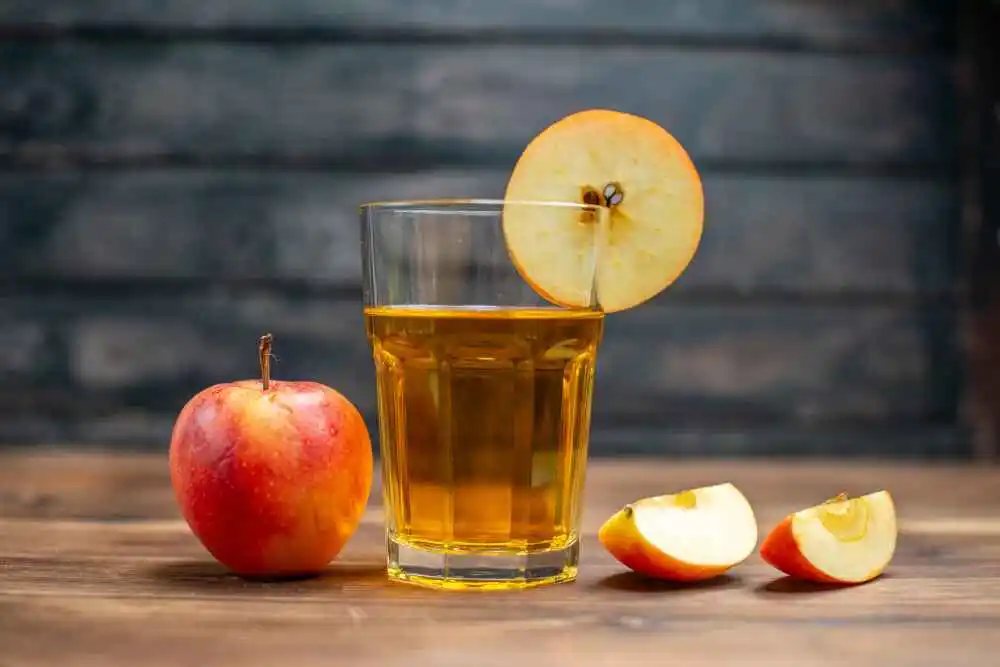How To Make Apple Cider Vinegar From Apple Cider Juice?

Apple cider vinegar is a type of vinegar made from fermented apple cider. It’s produced through a two-step fermentation process. First, the natural sugars in apple cider are fermented by yeast, turning them into alcohol. Then, bacteria are added to the alcohol solution, which further ferments the alcohol into acetic acid.
This acetic acid gives apple cider vinegar its strong, tangy flavor and characteristic aroma. Apple cider vinegar is commonly used in cooking, salad dressings, and marinades, and as a natural remedy for various health issues due to its potential health benefits.
To make apple cider vinegar from apple cider juice, ferment the juice in a clean container with added yeast to convert the sugars into alcohol. Then, introduce acetobacter bacteria to the alcohol solution, allowing it to further ferment into acetic acid. This process typically takes several weeks. Once the desired acidity is achieved, strain the liquid and store it in bottles.
How To Make Apple Cider Vinegar From Apple Cider Juice?
Making apple cider vinegar from apple cider juice is a straightforward process that involves fermenting the sugars in the juice into alcohol and then converting that alcohol into acetic acid through a secondary fermentation process.
Here’s a basic guide to making apple cider vinegar at home:
1. Prepare Ingredients and Equipment
To make apple cider vinegar from apple cider juice, gather apple cider juice, water (if needed), and optional sugar for fermentation.
You’ll also need a large glass jar or ceramic crock for fermenting, along with a cheesecloth or paper towel, a rubber band or string to cover the vessel, and glass bottles with tight-fitting lids for storage.
2. Prepare the Fermentation Vessel
Clean and sterilize the glass jar or ceramic crock thoroughly to remove any potential contaminants.
3. Mix Apple Cider Juice
Pour the apple cider juice into the fermentation vessel. Make sure the juice is unfiltered and unpasteurized as pasteurization kills the natural yeasts and bacteria needed for fermentation.
Optionally, you can add a small amount of sugar (like cane sugar or honey) to boost fermentation if the juice’s sugar content is too low.
4. Cover the Container
Cover the mouth of the vessel with cheesecloth or a paper towel and secure it with a rubber band or string. This allows air to flow while keeping out dust and insects.
5. Fermentation
Place the vessel in a dark, warm place with a consistent temperature between 60°F to 80°F (15°C to 27°C). The ideal fermentation temperature is around 70°F (21°C).
Stir the mixture daily with a clean utensil to promote oxygenation and discourage mold growth.
6. Monitor Fermentation
Fermentation usually takes 3 to 4 weeks, but it can vary depending on various factors such as temperature and sugar content. You’ll notice bubbles forming on the surface, indicating that fermentation is occurring.
7. Secondary Fermentation
Once the apple cider has turned into alcohol, it’s time for secondary fermentation, where the alcohol is converted into acetic acid by acetobacter bacteria. Taste the liquid periodically. When it reaches the desired acidity level, it’s ready.
This process can take another 3 to 4 weeks or longer. Taste the vinegar occasionally until it reaches the desired flavor.
8. Strain and Store
Once you’re satisfied with the flavor, you can strain the juice without a strainer. Pour the strained vinegar into clean glass bottles with tight-fitting lids. Store the bottles in a cool, dark place. The vinegar will continue to mature over time.

Frequently Asked Question
Does apple cider contain more nutrients than apple juice?
Generally, apple cider contains more vitamins, minerals, and antioxidants than apple juice because it is less processed and often includes the pulp and skin of the apple.
Which one is more recommended for children’s health, apple cider, or apple juice?
Moderation is key for children consuming apple cider or apple juice. Opting for homemade or low-sugar varieties and diluting with water can be healthier options.
Should I boil apple juice for cider?
Boiling apple juice for cider is optional but offers benefits like enhancing flavor, reducing spoilage risk, and adjusting sweetness. It’s a personal preference and depends on the desired flavor intensity and recipe specifics.
Conclusion
Crafting homemade apple cider vinegar from apple cider juice is a simple yet rewarding process that allows you to enjoy the health benefits and culinary versatility of this beloved ingredient.
By following these steps and exercising patience throughout the fermentation process, you can create a flavorful and all-natural vinegar that will elevate your dishes and provide a sense of accomplishment. So why not embark on your apple cider vinegar-making journey today?